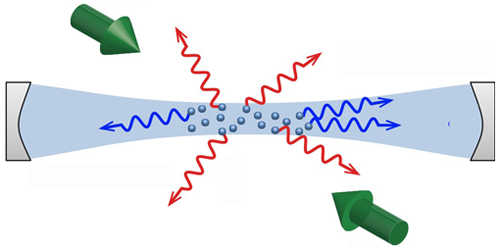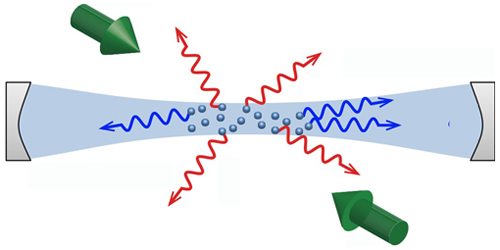Recycling Light from Atom Cooling
We tend to consider laser cooling from the perspective of the atoms that are being chilled. But the photons that carry away the heat may have interesting and useful properties, a new study suggests. Chiao-Hsuan Wang from the University of Maryland, College Park, and co-workers modeled the laser cooling of atoms inside a cavity. They found that the photons scattered by the atoms have a thermal energy distribution that resembles that of interacting particles. These photons might therefore be recycled and used to mimic other physical systems.
Typically, when light scatters from a gas or other medium, its energy distribution is a blackbody spectrum, in which the number of photons per energy “bin” is determined by a single parameter: the temperature. Recently, researchers have used semiconductor microcavities or molecular dyes to crowd together more photons per energy bin than would be expected for a blackbody distribution. These systems, which are characterized by a nonzero chemical potential, can behave like the photon equivalent of a Bose-Einstein condensate (BEC).
Wang and colleagues realized that similar photon crowding occurs for the leftover light from laser cooling. Modeling a cigar-shaped collection of laser-cooled atoms confined in an optical cavity, they calculated the distribution of scattered photons and found that it can be characterized by a temperature equal to the atoms’ temperature and a chemical potential equal to the energy of the laser photons. Photons with this distribution behave as if they interacted with each other. As such, the authors suggest that such photons could be used to carry out optical simulations of many-body quantum phenomena, such as the quantum Hall effect.
This research is published in Physical Review A.
–Michael Schirber
Michael Schirber is a Corresponding Editor for Physics based in Lyon, France.





